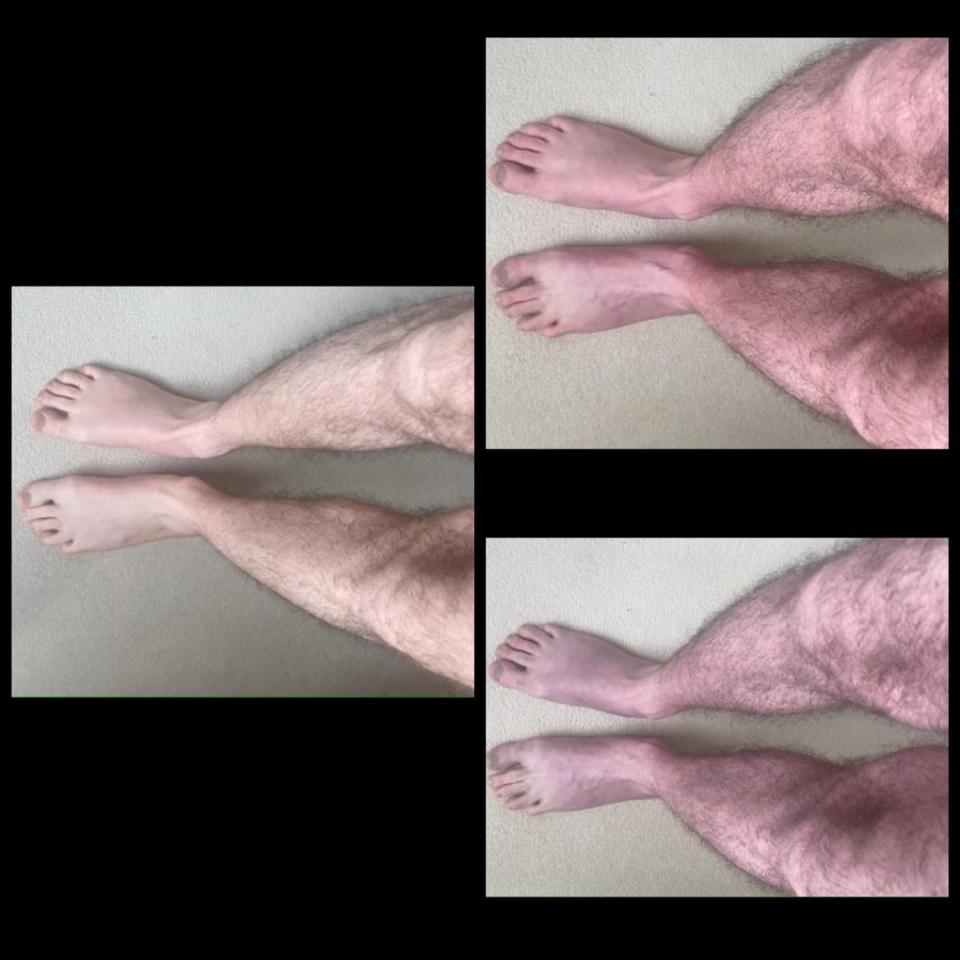Man’s legs turn purple when he stands up. It’s a rare long COVID symptom, doctors say
The development of a rare heart condition may actually be a symptom of long COVID, researchers say.
A man was referred to a specialist clinic with doctors from the University of Leeds in the United Kingdom after months of odd leg discoloration.
The 33-year-old’s legs would rapidly turn purple when he would stand, according to a case report published in The Lancet on Aug. 12.
“He reported that his legs would progressively feel heavy, tingly, itchy, and become dusky in color,” the doctors said in the report.
In just 10 minutes of standing, the man’s legs would go from completely normal to incredibly uncomfortable, the doctors said in an EurekAlert release.
His legs would once again go back to normal after a few minutes of sitting or lying down, they said.

The condition, a pooling of blood in the veins of the legs, is called acrocyanosis and is a common symptom of a rare heart condition.
“He was diagnosed with postural orthostatic tachycardia syndrome (POTS), a condition that causes an abnormal increase in heart rate on standing,” according to the release.
Only 0.2% of the population have been diagnosed with POTS, a relatively rare disorder, according to a study shared by the National Institutes of Health.
The symptoms of POTS — which include lightheadedness, heart palpitations, weakness, blurred vision, exercise intolerance and fatigue — are often misdiagnosed as other conditions due to their similarities, the NIH says.
For the 33-year-old man, he started to notice the color changes in his legs after he had a COVID-19 infection, according to the release.
“This was a striking case of acrocyanosis in a patient who had not experienced it before his COVID-19 infection,” case report author Manoj Sivan said in the release. “Patients experiencing this may not be aware that it can be a symptom of Long Covid and dysautonomia and may feel concerned about what they are seeing. Similarly, clinicians may not be aware of the link between acrocyanosis and Long Covid.”
A study in 2021 found some people experiencing long COVID symptoms were also diagnosed with POTS, as shared by the NIH.
“POTS can be triggered by infection, surgery, pregnancy or concussion,” the study said, “with the post-infectious being the most common mode of onset.”
Sivan’s team says there may be people who have developed POTS after having COVID-19 who may think they are only experiencing long COVID and are therefore not being treated for their condition.
Long COVID symptoms, like brain fog, chest pain and intense fatigue, are similar to POTS and may be misinterpreted.
“We need to ensure that there is more awareness of dysautonomia in Long Covid so that clinicians have the tools they need to manage patients appropriately,” Sivan said in the release.
Having long COVID could age your brain function an equivalent of 10 years, study says
Another updated COVID vaccine could be available in the fall. Here’s what we know
COVID left millions without full sense of taste, smell, study says. Can anything help?
Some adults 65 and over won’t get new COVID shot. Here’s why — and what experts think

